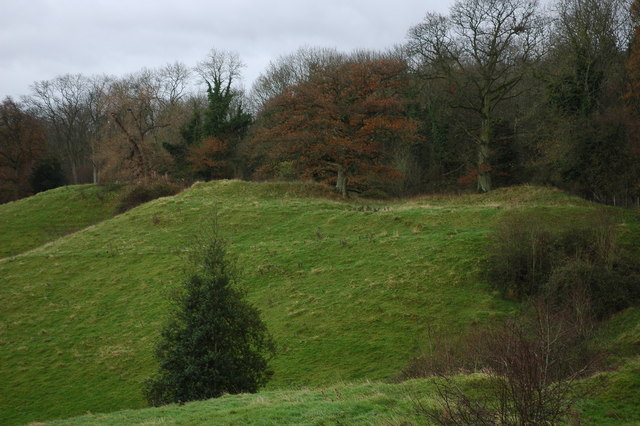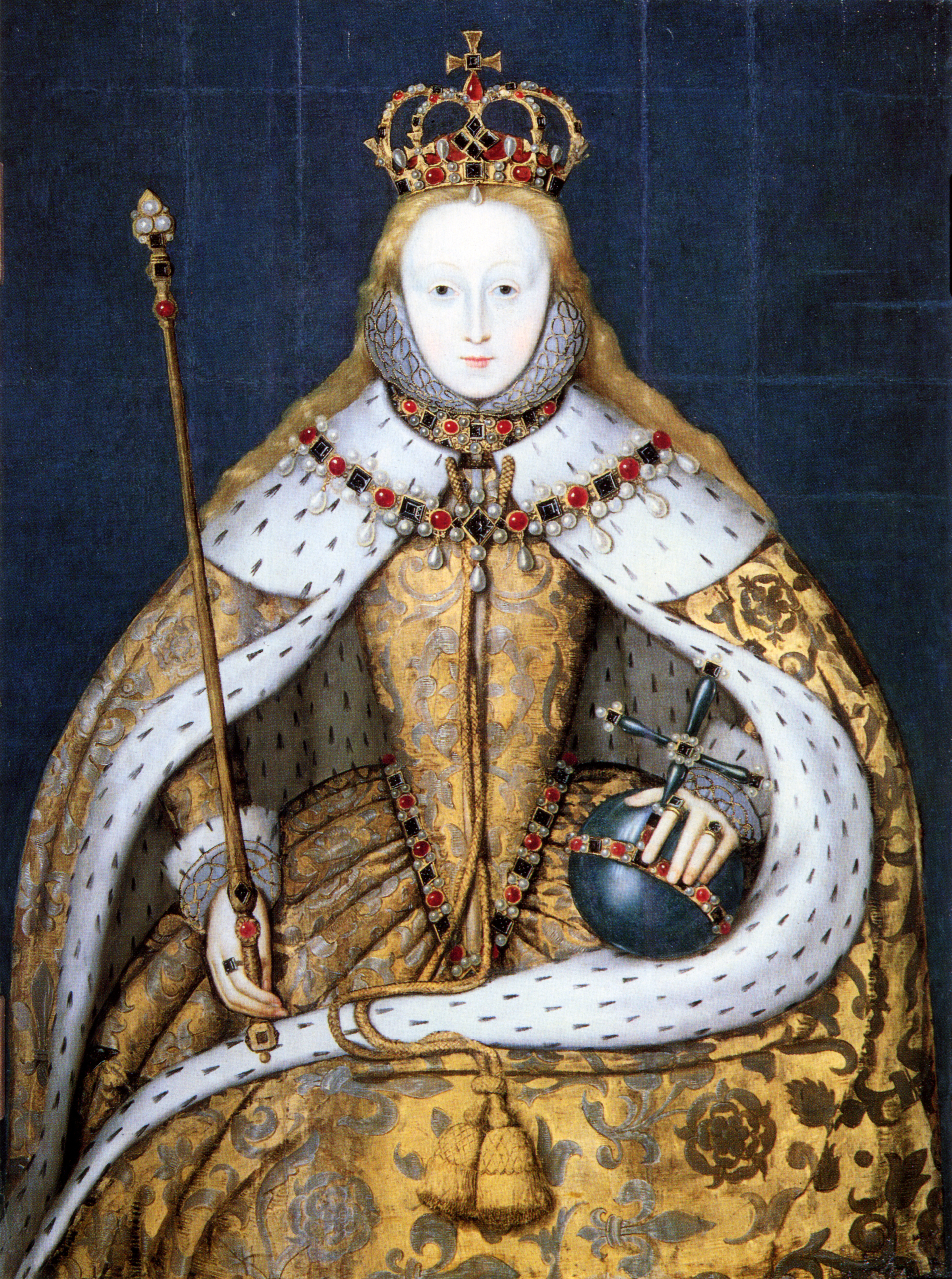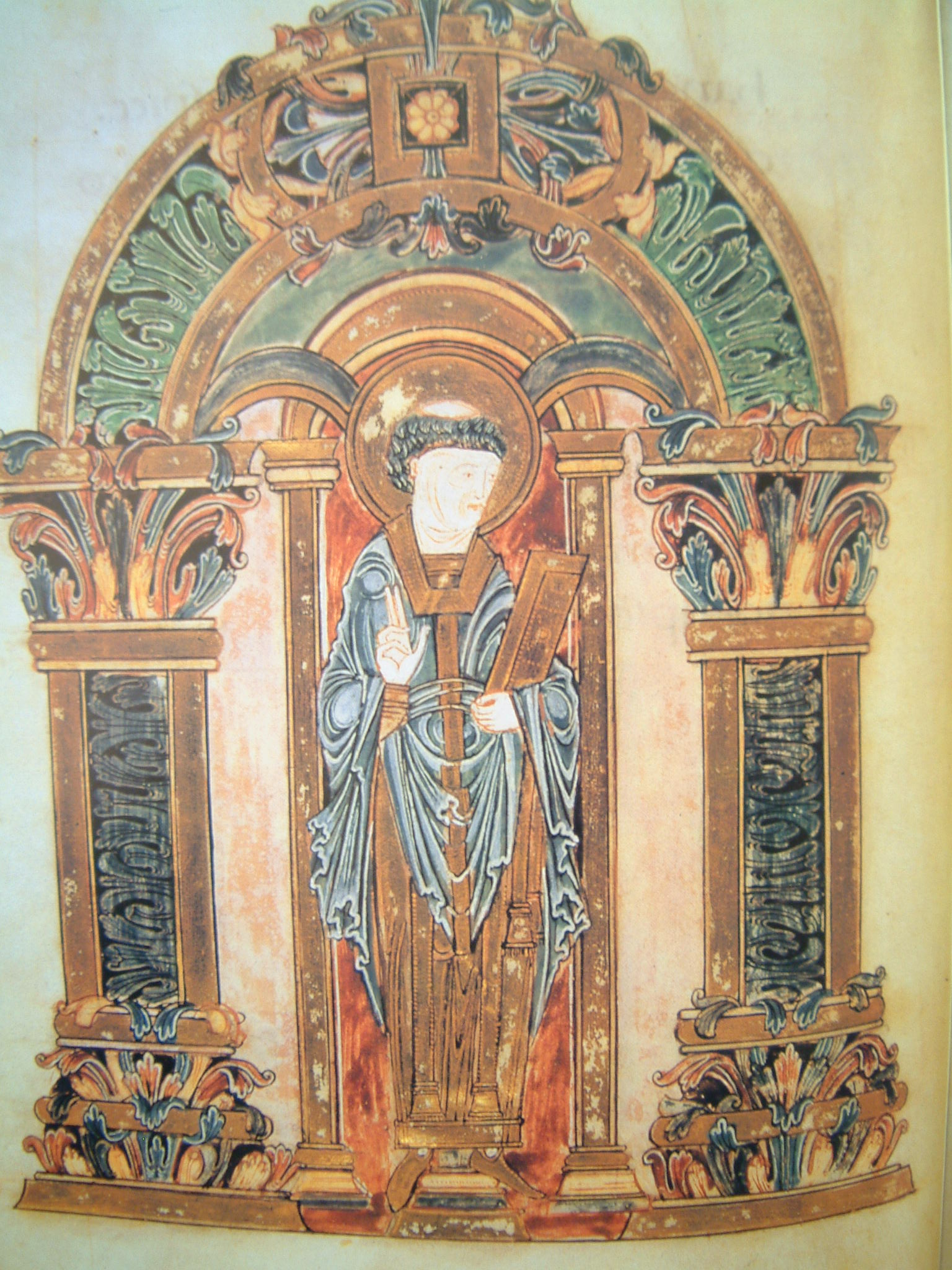|
Audrey Shelton Walsingham
Lady Audrey Walsingham (; 1568–1624) was an English courtier. She served as Lady of the Bedchamber to queen Elizabeth I of England, and then as Mistress of the Robes to Anne of Denmark from 1603 until 1619. Family connections Sometimes called "Etheldreda", she was born on 10 June 1568 to Sir Ralph Shelton of Shelton, Norfolk and Mary Woodhouse, daughter of William Woodhouse of Waxham. Her mother died five days after her birth. Her father was a son of Sir John Shelton and Margaret Parker, daughter of the heir to Henry, Lord Morley. John Shelton's mother was Anne Shelton née Boleyn, aunt of Anne Boleyn, Henry VIII's queen, and his sisters included Madge Shelton and Mary Shelton. Her aunt Mary Shelton married Sir John Scudamore. Audrey Shelton married Sir Thomas Walsingham, cousin of Sir Francis Walsingham. Their home was Scadbury Manor at Chislehurst. Lady of the Bedchamber to Elizabeth She served as Lady of the Bedchamber to Queen Elizabeth. She signed an inventory of ... [...More Info...] [...Related Items...] OR: [Wikipedia] [Google] [Baidu] |
Lady Of The Bedchamber
Lady of the Bedchamber is the title of a lady-in-waiting holding the official position of personal attendant on a British queen regnant or queen consort. The position is traditionally held by the wife of a peer. They are ranked between the Mistress of the Robes and the Women of the Bedchamber; unlike the latter they are not in regular attendance, however they are on duty for the more important public occasions. On overseas visits Queen Elizabeth II was usually accompanied by two ladies-in-waiting, one of whom was usually a Lady of the Bedchamber. The equivalent title and office has historically been used in most European royal courts (Dutch: ''Dames du Palais''; French: ''Dames'' or ''Dame de Palais''; German: '' Hofstaatsdame'' or '' Palastdame''; Italian: '' Dame di Corte''; Russian: '' Hofdame'' or '' Statsdame''; Spanish: '' Dueña de honor''; Swedish: ''Statsfru''). History In the Middle Ages, Margaret of France, the wife of King Edward I of England, is noted to have ... [...More Info...] [...Related Items...] OR: [Wikipedia] [Google] [Baidu] |
Scadbury Park
Scadbury Park is a Local Nature Reserve in Chislehurst in the London Borough of Bromley. It is also a Site of Metropolitan Importance for Nature Conservation. It is over , and is part of an extensive wildlife corridor together with Petts Wood and the Jubilee Country Park. It has large areas of ancient woodland, especially oaks, and flowers include lily of the valley, which is rare in London. Ponds have London's largest population of protected great crested newts. Much of it is undisturbed grassland, and it also includes a working farm. The main entrance is in Old Perry Street. The entrance piers still exist. Also a West Lodge to the estate still exists, also on Old Perry Street. The London Loop passes through it from Sidcup By-Pass Road near its junction with Perry Street to St Paul's Cray Road. History The manor is first recorded in the thirteenth century, when it was held by the ''de Scathebury'' family. In 1424 it was purchased by Thomas Walsingham, a wealthy wine and ... [...More Info...] [...Related Items...] OR: [Wikipedia] [Google] [Baidu] |
Bacton, Herefordshire
Bacton ( cy, Bactwn) is a small village in a rural area of south-west Herefordshire, England, 14 miles (23 km) from Hereford. History One mile to the north are some earthwork remains of a small motte and bailey castle known as Newcourt Tump – "Tump" is a dialect word for a rounded hill or tumulus. The castle seems to have fallen out of use by the 14th century. According to Domesday Book in 1086, Bacton, then in the hundred of Stradel, had only two households. The Lord of the Manor was Gilbert of Eskecot, whose tenant-in-chief was Roger of Lacy. The manor's history becomes clearer from the 13th century onwards. Parish church The parish church of St Faith's dates from 13th century and has a lengthy entry in Pevsner's survey of the county's buildings. Inside is a memorial to Blanche Parry. It is possible that an altar cloth belonging to the church was made from a dress once worn by Queen Elizabeth I of England and given to Blanche Parry. The material of the cloth appears to ... [...More Info...] [...Related Items...] OR: [Wikipedia] [Google] [Baidu] |
Hatfield House
Hatfield House is a country house set in a large park, the Great Park, on the eastern side of the town of Hatfield, Hertfordshire, England. The present Jacobean house, a leading example of the prodigy house, was built in 1611 by Robert Cecil, 1st Earl of Salisbury and Chief Minister to King James I. It is a prime example of Jacobean architecture. The estate includes extensive grounds and surviving parts of an earlier palace. The house is currently the home of Robert Gascoyne-Cecil, 7th Marquess of Salisbury. It is open to the public. History An earlier building on the site was the Royal Palace of Hatfield. Only part of this still exists a short distance from the present house. That palace was the childhood home and favourite residence of Queen Elizabeth I. Built in 1497 by the Archbishop of Canterbury (formerly Bishop of Ely), King Henry VII's minister, John Cardinal Morton, it comprised four wings in a square surrounding a central courtyard. The palace was seized by He ... [...More Info...] [...Related Items...] OR: [Wikipedia] [Google] [Baidu] |
Portraiture Of Elizabeth I Of England
The portraiture of Elizabeth I spans the evolution of English royal portraits in the early modern period (1400/1500-1800), depicting Queen Elizabeth I of England and Ireland (1533–1603), from the earliest representations of simple likenesses to the later complex imagery used to convey the power and aspirations of the state, as well as of the monarch at its head. Even the earliest portraits of Elizabeth I contain symbolic objects such as roses and prayer books that would have carried meaning to viewers of her day. Later portraits of Elizabeth layer the iconography of empire—globes, crowns, swords and columns—and representations of virginity and purity, such as moons and pearls, with classical allusions, to present a complex "story" that conveyed to Elizabethan era viewers the majesty and significance of the 'Virgin Queen'. Overview Portraiture in Tudor England Two portraiture traditions had arisen in the Tudor court since the days of Elizabeth's father, Henry VIII. T ... [...More Info...] [...Related Items...] OR: [Wikipedia] [Google] [Baidu] |
Swithun
Swithun (or Swithin; ang, Swīþhūn; la, Swithunus; died 863 AD) was an Anglo-Saxon bishop of Winchester and subsequently patron saint of Winchester Cathedral. His historical importance as bishop is overshadowed by his reputation for posthumous miracle-working. According to tradition, if it rains on Saint Swithun's bridge (Winchester) on his feast day (15 July) it will continue for forty days. Biography St. Swithun was Bishop of Winchester from his consecration on 30 October 852 until his death on 2 July 863. However, he is scarcely mentioned in any document of his own time. His death is entered in the Canterbury manuscript of the '' Anglo-Saxon Chronicle'' (MS F) under the year 861. He is recorded as a witness to nine charters, the earliest of which (S 308) is dated 854. More than a hundred years later, when Dunstan and Æthelwold of Winchester were inaugurating their church reform, Swithun was adopted as patron of the restored church at Winchester, formerly dedicate ... [...More Info...] [...Related Items...] OR: [Wikipedia] [Google] [Baidu] |
Iris (mythology)
In ancient Greek religion and mythology, Iris (; ; grc-gre, Ἶρις, Îris, rainbow, ) is a daughter of the gods Thaumas and Electra, the personification of the rainbow and messenger of the gods, a servant to the Olympians and especially Queen Hera. Iris appears in several stories carrying messages from and to the gods or running errands but has no unique mythology of her own. Similarly, very little to none of a historical cult and worship of Iris is attested in surviving records, with only a few traces surviving from the island of Delos. In ancient art, Iris is depicted as a winged young woman carrying a caduceus, the symbol of the messengers, and a pitcher of water for the gods. Iris was traditionally seen as the consort of Zephyrus, the god of the west wind and one of the four Anemoi, by whom she is the mother of Pothos in some versions. Etymology The ancient Greek noun ' means both the rainbow and the halo of the Moon. An inscription from Corinth provides evidence for ... [...More Info...] [...Related Items...] OR: [Wikipedia] [Google] [Baidu] |
Stomacher
A stomacher is a decorated triangular panel that fills in the front opening of a woman's gown or bodice. The stomacher may be boned, as part of a corset, or may cover the triangular front of a corset. If simply decorative, the stomacher lies over the triangular front panel of the stays, being either stitched or pinned into place, or held in place by the lacings of the gown's bodice. A stomacher may also be a piece or set of jewellery to ornament a stomacher or bodice. Early stomachers In the 15th and 16th centuries, men and women both wore decorative stomachers (often called placards or plackets) with open-fronted doublets and gowns. The form and style of these stomachers in combination with the headgear is often used to date paintings to a certain time period. In 1603, Elizabeth Wriothesley, Countess of Southampton, who was pregnant, wrote to her husband in London asking him to buy her a stomacher, 'buy me a "stumiger" of scarlet, half a yard broad, and as long at least, li ... [...More Info...] [...Related Items...] OR: [Wikipedia] [Google] [Baidu] |
Harefield Entertainment
The Harefield Entertainment included hospitality and performances for Elizabeth I of England in August 1602. Several copies of the performance script survive, along with original manuscript accounts of the Queen's host which seems to have been manipulated by literary forgery in the 19th-century to enhance their interest. Preparations Thomas Egerton, 1st Viscount Brackley, Sir Thomas Egerton, the Lord Keeper, bought Harefield Place, now in the London Borough of Hillingdon, from Sir Edmund Anderson in 1601. The Queen came to Harefield on 29 July 1602 and stayed until 3 August. Egerton's bills for the entertainment and hospitality survive. Some speeches and drama were also recorded and printed. A "lottery" was performed in which gifts were presented to the ladies of the court as humorous rhyming couplets were recited. Modern critics emphasise the likely role of Egerton's wife, Alice Spencer, Countess of Derby, Alice, Countess of Derby in planning and devising the events. The early edit ... [...More Info...] [...Related Items...] OR: [Wikipedia] [Google] [Baidu] |
Thomas Egerton, 1st Viscount Brackley
Thomas Egerton, 1st Viscount Brackley, (1540 – 15 March 1617), known as 1st Baron Ellesmere from 1603 to 1616, was an English nobleman, judge and statesman from the Egerton family who served as Lord Keeper and Lord Chancellor for twenty-one years. Early life, education and legal career Thomas Egerton was born in 1540 in the parish of Dodleston, Cheshire, England. He was the illegitimate son of Sir Richard Egerton and an unmarried woman named Alice Sparks from Bickerton. He was acknowledged by his father's family, who paid for his education. He studied Liberal Arts at Brasenose College, Oxford, and received a bachelor's degree in 1559. He then studied law at Lincoln's Inn and called a barrister by 1572. He was a Roman Catholic, until a point in 1570 when his lack of conformity with the Church of England became an issue when his Inn passed on a complaint from the Privy Council. He built a respectable legal practice pleading cases in the Courts of Queen's Bench, Chance ... [...More Info...] [...Related Items...] OR: [Wikipedia] [Google] [Baidu] |
John Spilman
Sir John Spilman (also spelt Spielman) (died 1626) was a Lindau, German-born entrepreneur who founded the first commercially successful paper-mill in England, establishing a factory on the River Darenth in Dartford, Kent in 1588.Dartford: Cradle of Britain's Papermaking Industry; http://www.dartfordarchive.org.uk/technology/paper.shtml Spilman was also jeweller to Queen Elizabeth I, and was knighted by King James I. Paper making In 1588 Spilman was granted a Crown lease on two mills in the Manor of Bignores at Dartford (the mills were previously leased to local landowner William Vaughan who died in 1580). Spilman repaired and altered the mills, at an estimated cost of £1,500, and financed the employment of skilled German paper-makers to produce good quality white paper. One of the first works published using Spilman's paper was a poem by Thomas Churchyard dedicated to Sir Walter Raleigh thus: A sparke of friendship, and warm good will ; with a poem concerning the commodity of s ... [...More Info...] [...Related Items...] OR: [Wikipedia] [Google] [Baidu] |
Henry Percy, 9th Earl Of Northumberland
Henry Percy, 9th Earl of Northumberland, KG (27 April 1564 – 5 November 1632) was an English nobleman. He was a grandee and one of the wealthiest peers of the court of Elizabeth I. Under James I, Northumberland was a long-term prisoner in the Tower of London, due to the suspicion that he was complicit in the Gunpowder Plot. He is known for the circles he moved in as well as for his own achievements. He acquired the sobriquet The Wizard Earl (also given to Gerald FitzGerald, 11th Earl of Kildare), from his scientific and alchemical experiments, his passion for cartography, and his large library. Early life He was born at Tynemouth Castle in Northumberland, England, the son of Henry Percy, 8th Earl of Northumberland, whom he succeeded in 1585. His father died, an apparent suicide, in the Tower of London, where he was being questioned about his allegedly treasonable dealings with Mary Queen of Scots. His mother was Katherine Neville, daughter and co-heiress of John Neville, ... [...More Info...] [...Related Items...] OR: [Wikipedia] [Google] [Baidu] |

.jpg)









